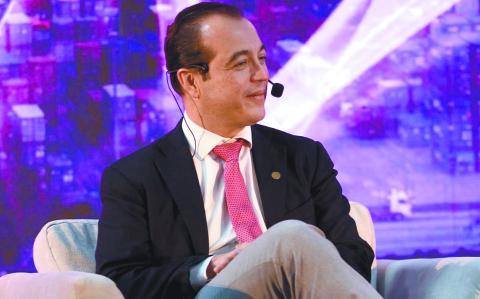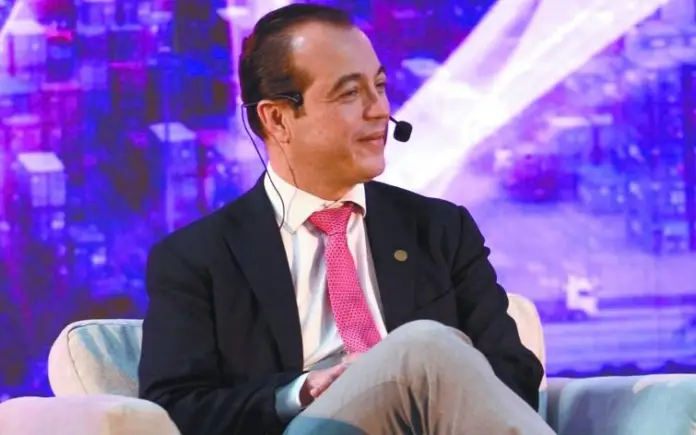
The Mexican government will begin the process of reviewing the Treaty between Mexico, the United States and Canada (T-MEC) with its Canadian counterpart next week, reported Luis Rosendo Gutiérrez, Undersecretary of Foreign Trade of the Ministry of Economy.
To do so, a delegation of officials will travel – headed by Gutiérrez – who will also visit the city of Washington to form and strengthen coalitions with interested parties in promoting productive integration in North America.
This delegation will leave next Wednesday, stay three or four days in Washington and then travel to Ottawa.
While the administration of President Claudia Sheinbaum began on October 1, in the United States there will be presidential elections next November and the government of Canadian Prime Minister Justin Trudeau should end in 2025, although this may vary depending on the political situation in his country.
“We are going to establish a position with Canada, because they are staying a little longer; In the case of the United States, since they change in November, we are practically going to a handshake,” said Gutiérrez while participating in the XXX Mexican Foreign Trade Congress, organized by the Mexican Council for Foreign Trade, Investment and Technology (Comce).
Article 34.7 of the T-MEC determines that the agreement will end 16 years after its entry into force, “unless each party confirms that it wishes to continue with this Agreement for a new period of 16 years,” in accordance with the procedures of the T-MEC itself.
These procedures establish that in July 2026, on the sixth anniversary of the entry into force of the T-MEC, the Free Trade Commission of the same will meet to review the agreement and any recommendations presented by Mexico, the United States or Canada, and decide on any appropriate action.
“Since the United States government is going to change, we are going to start working with the key people we have, importers of (products originating in) Mexico there, to see the coalitions that we are going to be putting together and we are also going to be working with people from the government there,” said Gutiérrez.
According to the official, these are coalitions between the Mexican government and businessmen interested in maintaining the benefits for the three countries of the T-MEC and improving this trade agreement.
There is an opportunity, from his perspective: the United States and Canada are interested in strengthening the rules of origin and in having an increasingly greater component of the region in everything that the three nations produce. And on this subject, President Sheinbaum was presented with a specific program this Monday.
“She liked it a lot, she put a lot of interest in it and asked both the Ministry of Economy and other agencies to promote this transformation of what we are bringing from other countries, in order to be able to generate it here,” he said.
At another point in his presentation, Gutiérrez stated that it is necessary to make an industrial policy in a strategic way, considering the productions that Canada and the United States want to bring from Asia.
In particular, he reported that the Sheinbaum government will give priority to the semiconductor, electric car, battery, rare mineral, electronic, medical equipment and textile industries.
“It does not mean that we are not going to work with all the other branches of the economy, but that is where we are going to put our attention,” he said.
After indicating that the national component that Mexico has in its exports is only 20%, he aspired: “We have to increase it, we have to go to 40 or 50% if possible.”
Sergio Contreras, president of Comce, highlighted in this regard: “We are a unique North America, the largest commercial block in the world. We have to promote this aspect of unity, if one of us does well, all three of us do well.”
Starting point: U.S.-Mexico CEO Dialogue
This week, within the framework of the fourteenth edition of the U.S.-Mexico CEO Dialogue, the Mexican government affirmed that the event was the starting flag for the defense of the T-MEC in the revision of the treaty scheduled for 2026.
“We have the idea of maintaining the treaty with few modifications,” said Sheinbaum in a press conference, after a meeting with senior officials of the United States and with some 240 general directors of companies (CEOs) of the two countries, in a summit that was held at the National Palace.
“(The U.S. Mexico CEO Dialogue 2024 meeting) is the starting signal for the promotion and defense of the North American free trade agreement,” said Marcelo Ebrard, Secretary of Economy, who accompanied Sheimbaum at the press conference.
“It is the starting signal for a better future, for increased investments,” added Ebrard.
The Republican candidate for the Presidency of the United States, Donald Trump, has stated that if he reaches the White House for the second time, he will seek not a review, but a renegotiation of the T-MEC, which implies deeper changes.
“Upon taking office, I will formally notify Mexico and Canada of my intention to invoke the six-year renegotiation provision of the T-MEC that I put in place,” Trump said last week during a speech at the Economic Club of Detroit. Trump has also questioned investments and trade flows from China to Mexico, often without offering data.
How does the USMCA review clause work?
In the Final Provisions chapter of the USMCA, the parties commit to review the agreement on the sixth anniversary of its entry into force.
If the review decides not to renew an extension, the USMCA would remain in force for another 10 years.
But if they decide to renew it, the validity will be extended for another six years, for a total of 16 years.
If one of the parties does not confirm its desire to extend the validity of the agreement for another 16-year period, the parties will carry out a joint review of the agreement every year.
The agreement only specifies that a “party” will review the agreement; it does not say whether it will be the President or the United States Congress that will review it.
Since the agreement entered into force in July 2020, the first review of the agreement is scheduled for July 2026.
Source: eleconomista






